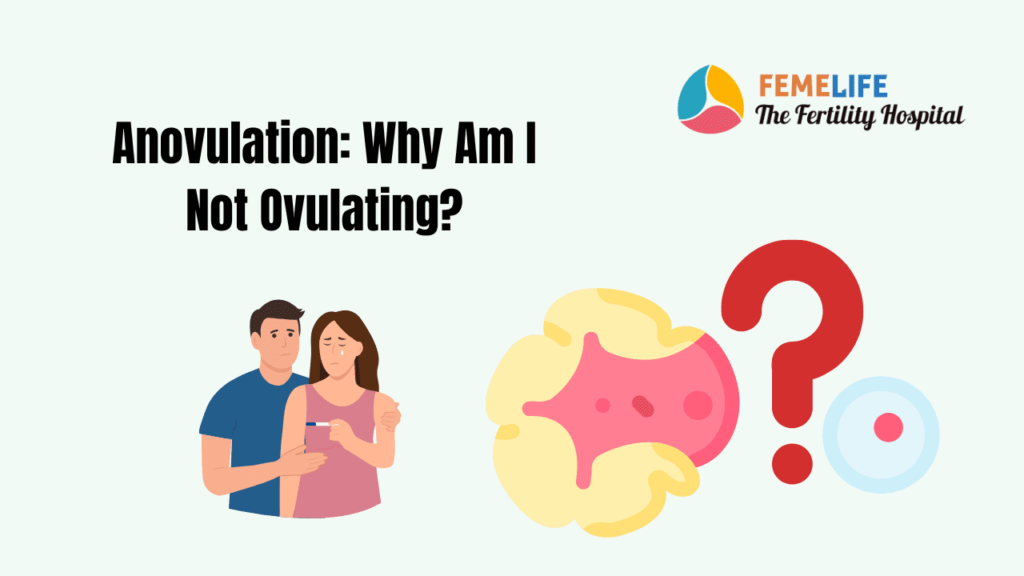Are you fretting over your negative ovulation tests? Are you inundated with questions about periods, anovulation, and their disconnect?
Well, you are not alone!
It is not uncommon to ponder these questions. But, the clearer the facts, the more power you have over your own body. During the menstrual cycle, when the eggs are not released from the ovaries, anovulation occurs — resulting in your negative ovulation tests.
Let us rewind a bit about menstrual cycle and ovulation before delving into the factors that affect the routine of ovulation.
Menstrual cycle and Ovulation in brief
The first day of the menstrual cycle marks the first day of bleeding. Typically, the menstrual bleeding lasts for 3 to 7 days.
Dr. Jen Gunter, a renowned OB/GYN, in her book The Vagina Bible, describes the menstrual cycle as three jugglers — hypothalamus, pituitary gland and the ovaries.
“If everything is on point, then the system works flawlessly; however, one late throw or missed catch and everything gets out of whack,” she quips.
Let us understand the role of the three jugglers in menstruation.
The three jugglers
As soon as the hypothalamus releases gonadotropin-releasing hormone (GnRH), the pituitary gland is triggered.
The pituitary gland, now, releases the follicle stimulating hormone (FSH). Now, your ovaries begin to develop the follicles. These follicles produce estrogen thickening the lining of the uterus.
When the estrogen rises high enough, the pituitary gland releases Luteinizing hormone (LH). This hormone instigates ovulation.
The egg travels down the fallopian tube into the uterus.
Here, it awaits to be fertilized by the sperm.
Well, if it meets the sperm, you get pregnant. Else, you shed the uterine lining along with other secretions as blood.
Here is the catch.
Since the menstrual phase occurs after the ovulatory phase, does that mean you have ovulated? Then, why do the ovulation tests show negative results?
Periods or Breakthrough bleeding with anovulation
The blood that you notice might not have been the menstrual shedding. It could be breakthrough bleeding. This occurs due to several reasons like taking hormonal birth control pills or using Intra-uterine devices (IUDs).
In order to confirm ovulation, there are several medical devices such as Inito. It works by measuring the hormones at play — including progesterone (PdG) .
The graph of your progesterone levels varies vastly during different phases of your menstrual cycle. Low progesterone could indicate absence of ovulation.
Causes of anovulation
If you are getting negative ovulation test results, you might experience it due to any of the following:
Polycystic ovary syndrome (PCOS)
- It is a common endocrine disorder experienced by women in their reproductive years. It is also the most common cause of anovulatory infertility.
- In women with PCOS, there is a raised concentration of Luteinizing Hormone (LH), testosterone, and androstenedione, in association with low or normal levels of follicle stimulating hormone (FSH).
Low BMI
- Women who have a low BMI due to illnesses, anorexia nervosa or excessive exercise experience amenorrhea.
- If you are experiencing this, leptin that is secreted from fat prevents pulses of gonadotropin-releasing hormone (GnRH) to be released by hypothalamus.
- Although BMI is not an overall indicator of health, studies show that infertility could sometimes be associated with higher and lower BMI.
Medications
- If you are on birth control pills or oral contraceptives, you might not ovulate.
Stress
- You might not ovulate if you are experiencing chronic stress.
- Stress-induced anovulation (SIA) hinders the secretion of GnRH.
- Certain behavioral changes in your body could lead to stress.
Hypothalamic lesions
- Tumors, inflammation, and lesions of the hypothalamus can also cause anovulation.
Menopause
- If you attain early menopause before the age of 45, you will not ovulate.
- You might experience certain menopausal symptoms like hot flashes, night sweats, vaginal dryness, low mood or anxiety.
It is important that you understand the symptoms and the ways in which anovulation can manifest in your body.
Symptoms of anovulation
Oligomenorrhoea – If you have irregular periods (periods that occur at the interval of 36 days or fewer than eight cycles per year), it could be a sign of anovulation
Amenorrhea – Although the criteria for amenorrhea is not clearly defined, females with no menses between 14 and 16 (primary amenorrhea) or menstruating women who experience the absence of periods for six months (secondary amenorrhea) are usually undergoing amenorrhea. This could also indicate your anovulation.
Anovulatory bleeding – If you experience anovulation, there could still be a build up of the uterine lining. Since there are no eggs to trigger the shedding, the uterine lining sheds randomly.
Diagnosis
If you think you are experiencing anovulation, you can consult with your physician about this.
In addition to the at-home tests for ovulation, clinicians tests for your levels of
- Blood progesterone levels
- Blood thyroid levels
- Blood prolactin levels
- Ultrasound exams of your pelvic organs
Summary
- Anovulation occurs when the eggs are not released from the ovaries.
- Heavy bleeding, irregular bleeding, absence of menses could be reasons for anovulation.
- If you are trying to conceive and experience the symptoms, consult your clinician.
- You can have your periods and still not ovulate.
- High and low BMI can cause anovulation.
Sources
- https://www.ncbi.nlm.nih.gov/pmc/articles/PMC1995495/
- https://pubmed.ncbi.nlm.nih.gov/35314524/
- https://www.glowm.com/section-view/heading/Menstruation%20and%20Menstrual%20Disorders:%20Anovulation/item/295#
- https://my.clevelandclinic.org/health/diseases/21698-anovulation

